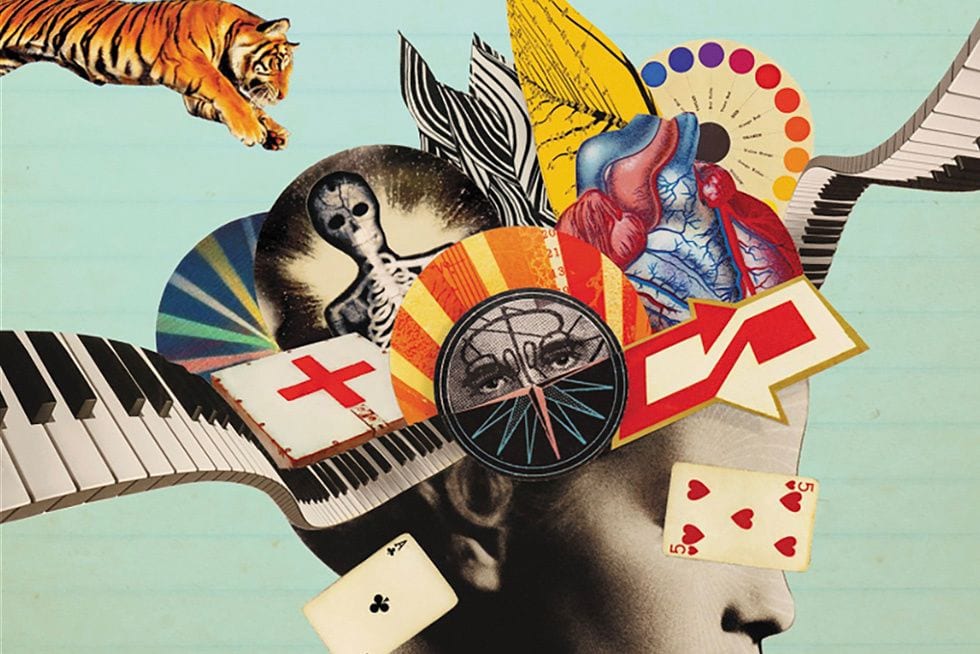
A typical adult human brain weighs about three pounds and comprises only abut two percent of an individual’s body weight, yet contains perhaps 100 billion neurons (nerve cells) and 100 trillion synapses (structures permitting communication between neurons). Many experts believe the human brain is the most complex object in the universe, and yet for most people it functions more or less as expected, most of the time, so we seldom give our brains a second thought.
We mainly take note of brain functioning when something goes wrong, as in the case of the 19th century railway worker Phineas Gage. As everyone who has ever taken an introductory psychology course knows, a workplace accident caused an iron rod to pass through Gage’s skull. Rather miraculously, he survived, but his personality was markedly changed following the injury, to the degree that people who knew him well felt he was no longer himself. Once a pleasant and kind man, after the accident he became rude, aggressive, and given to swearing. Today we know a physical reason that could account for his personality change: the injury very likely damaged one or both of his frontal lobes, parts of the brain critical in integrating memories and governing emotions.
Studying people whose brains differ from the norm can tell us a lot about how the average brain functions as well. Fortunately, it’s not necessary for an individual to have suffered a traumatic injury or illness in order to have a brain that functions differently from that of most people, and the differences are not always negative. In Unthinkable: An Extraordinary Journey Through the World’s Strangest Brains, journalist Helen Thomson profiles nine individuals whose brain functioning differs from the norms in ways that are both interesting and which can help explain aspects of how the brains of average people work.
Take Rubén, a Spanish journalist. He’s partially color blind (he has difficulty distinguishing between colors which contain red or green), yet sees colors (including green) where others do not. The explanation? He has synesthesia, experiencing various crossings of his senses, so that he sees colors when he thinks about certain ideas, hears or sees certain objects including letters, numbers, names, and shapes, and when he feels certain emotions. Perhaps most interestingly, he sees colorful auras around people, sometimes randomly and sometimes linked to emotions he feels toward them. While about four percent of the population is believed to experience some kind of synesthesia, Rubén’s case is particularly interesting since he is one of only two people known to be both color blind and to experience synesthesia.
Other individuals profiled in Unthinkable include Bob, a television producer in Colorado who can tell you in detail about every day of his life, from the weather to who he spoke to, thanks to a condition called Highly Superior Autobiographical Memory. There’s Sharon, who suffers from Developmental Topographical Disorientation Disorder and is thus unable to form a mental map of her surroundings, resulting in her being more of less permanently lost. There’s Tommy, a drug addict noted for his violent temper who became caring and gentle after suffering two strokes, and also began drawn compulsively and speaking in rhyme.
The subject matter of Unthinkable brings to mind the work the neurologist and popular science writer Oliver Sacks, whose books include The Man Who Mistook His Wife for a Hat (1985), Seeing Voices: A Journey Into the World of the Deaf (1989), and The Island of the Colorblind (1997). However, Thomson is a journalist rather than a physician, and she met her subjects on their own turf rather than in a clinical setting, so she offers a different perspective on the individuals she profiles.
Thomson’s writing style is less condensed than Sacks’ and more reminiscent of magazine feature writing than clinical case studies. She includes some of her own experiences (for example, while traveling to meet the subjects and while interviewing them) within the profiles, which makes for a rather marmite style of writing. Some people love this approach because it personalizes each story and feels more honest than an impersonal narrative voice because it acknowledges the unique viewpoint and experiences of the person writing the story. Some, however, hate it because it can feel like padding and because it pulls the focus away from the people being profiled (which is presumably the book’s main feature of interest) and onto the writer herself. I’m more in the latter camp myself, but the author’s stylistic choices did not prevent me from enjoying Unthinkable.
One strength of Unthinkable is the way Thomson places the specific differences of each profile subject in historical and scientific context. For example, the chapter on Sylvia, a nearly deaf woman who constantly experiences aural hallucinations, includes a discussion of other cases of visual and aural hallucination, as well as directions for how to invoke your own hallucinations should you wish to do so. While the profiles are written for a popular audience, endnotes allow anyone who wishes to dig further into the science behind each profile the opportunity to do so.
Unthinkable is an eminently readable book that includes a wealth of information about how the brain functions, made concrete through profiles of nine individuals whose brains function differently from what we consider to be the norm.

